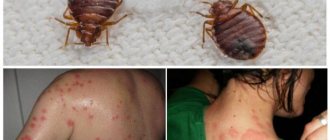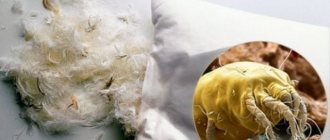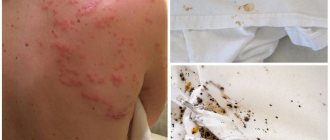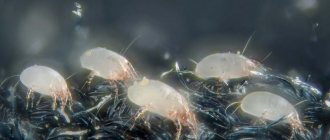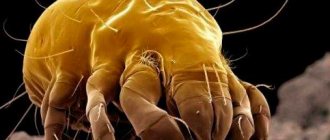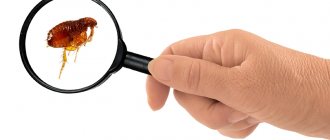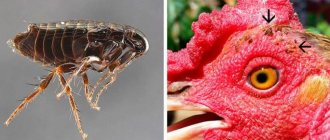Ticks are arthropod insects of the arachnid class, belonging to the order of ectoparasites. They are microscopic in size, but can cause enormous harm to health. By parasitizing the body of a bird, mites not only damage the structure of the skin, but also poison the entire body as a whole.
The appearance of ticks in a budgie is a serious disease that requires immediate intervention. What types of parasites are found in pet parrots, and how to quickly cure your feathered friend.
Sources of infection
It is impossible to rule out infection of a bird from a tick bite. Veterinarians identify the following sources of infection:
- Poor living conditions, non-compliance with the rules of basic hygiene and nutrition, lack of care on the part of the owner.
- You can buy an already infected pet. The probability increases if there are many birds in the cage and among them there are sick ones.
- Grain mixture of low quality or expired, damaged by fungus and mold.
- New plaid accessories that have not been heat treated. Toys that have been used or donated by the owners of another parrot pose a high risk.
- The presence in the house of bouquets or compositions of tree branches and shrubs that may contain parasites.
- Contact with an infected parrot during mating.
- Exceptional cases include the “transportation” of ticks on the soles of shoes.
Prevention
Even the most careful owner is not immune from the appearance of ticks in a budgerigar. But if you follow simple rules, you can reduce the risk of infection to almost zero.
Prevention measures:
- when purchasing, keep the “newbie” in quarantine for 1-1.5 months and carefully monitor it;
- carefully treat all new items for your pet;
- clean the cage daily, regularly do general cleaning and ventilate the room;
- Wash feeders and drinking bowls every day, give the parrot only clean water;
- scald tree branches from the street and greens with boiling water;
- teach the bird to bathe, and from time to time give a bath from a decoction of herbs;
- purchase high-quality food (wet loose cereals, vegetables and fruits with boiling water);
- Pay special attention to your pet during molting (the parrot often itches, and you may not notice the appearance of mites).
It is important to respond in a timely manner to changes in the appearance and behavior of a budgie. You should not have the illusion that it will “go away on its own” or self-medicate. Without special knowledge, it is easy to confuse the symptoms of tick infection with other viruses and diseases.
Despite the vulnerability of parrots, they are surprisingly tenacious and are able to quickly recover even from serious illnesses. With conscientious care and care, wavy friends maintain beauty and health for many years.
Classification of parasites
The danger of a tick is that it exists for a long time without noticeable symptoms. A single focus of itching will not bother the bird much, but after viral bodies enter its blood and its immunity decreases, the parasite will begin to multiply.
Types of parasites:
Scabies One of the common types of parasites, it settles in the upper layers of the parrot's skin. The principle of infection is that the produced toxins are placed in the bite area and the bird is infected.
Feathered Has a small flattened body. It eats away at the skin and drinks the blood and lymph that appears on the surface of the epidermis after the bird scratches or gnaws itself in the hope of getting rid of the itch.
Tracheal Lives in the internal respiratory organs, where it makes a nest. After laying the larvae, the female crawls into the upper respiratory tract, and the male continues to infect the lungs of the bird.
Syringophilosis The parasite settles at the edge. The parasite feeds on lymph and gradually infects new feathers. Actively breeding.
Can illness occur?
Even pet birds can be infested with different types of mites. They appear for various reasons, which include poor sanitation, poor quality food, or communication with infected individuals.
It is almost impossible to visually determine the presence of the disease, since the parasites are small in size. They feed on bird tissue and can also cause abnormalities in feathers or skin.
If, at the same time as ticks, the wavy suffers from other diseases or is not provided with proper care, then the parasites begin to multiply quickly. The bird itches a lot and plucks feathers, and can also become infected with various infectious diseases.
Symptoms and stages of the disease
When bitten by a scabies mite, there are several stages of a pet’s disease:
- Initial. There is no way to identify the parasite. There are no symptoms during the incubation period of 120 days.
- Easy. Itching initially appears on the paws and wax, growths appear from scratching, peeling and flaking begin, the parrot often scratches the bite site.
- Average. The parasite begins to infect the beak, eyelids and cloaca. After a bite, the beak begins to deform, and the bird stops eating, and feathers may fall out.
- Heavy. Global baldness is observed, there are scabs on the bald spots, the beak is crooked and bent to the side, the joints on the paws are inflamed. The pet stops eating and drinking, does not respond to sounds and external stimuli. The body is completely infected within six months. If you are not careful, the tissue of the bird’s internal organs and limbs will begin to die, after which it will die.
When infected with feather mites, a parrot will experience severe itching. He feels uncomfortable, sleeps poorly and becomes restless, his appetite worsens or disappears. As the disease develops, wounds and ulcers on the body do not heal, and in a humid and warm environment the number of mites increases. The pet's immunity weakens, feathers fall out, and weight decreases. This type of parasite exhibits maximum activity in the summer. Identifying a tick is simple - you need to warm the bird under a lamp for five to ten minutes. Ticks are heat-loving and will crawl to the surface.
The tracheal mite moves along the lining of the throat, thus causing a sore throat and the bird begins to cough. Some ticks are removed with saliva during coughing, while others are removed along with droppings. The first sign is a change in voice timbre or its absence. As the disease develops, the bird will have a constant cough, sneezing, and whistling in the chest area. Later, the pet begins to breathe with its beak, constantly opening it. Wounds will increase on the internal organs of the animal and foci of inflammation will appear; baldness of the head may be observed - feathers will partially or completely fall out. The bird will begin to refuse food, shortness of breath and loss of consciousness will appear. The final and worst stage of the disease is paralysis and death. Infection and disease are often asymptomatic, which increases the danger of tracheal parasites. The diagnosis can only be made by a veterinarian after testing the mucous membrane and droppings.
Syringophilosis settles in the flight and tail feathers, and inflammation of the epidermis begins. The incubation period is 90 days. The bird is losing weight and is depressed. Spots appear on the feathers. They become dull and fall out. The disease occurs in young pets with weak immune systems.
Why are ticks dangerous?
Infection with parasites is an insidious disease. Ticks can live on a bird’s body for 2-3 months without being detected. The impetus for their “activation” is usually the weakened immunity of the parrot due to past viruses or infections.
There are different types of parasites, each of them has its own characteristics. Some feed on epithelial tissues, while others infect the mucous membrane or respiratory tract. Any type of mite negatively affects the health, appearance and mental state of the bird.
A progressive disease for a budgerigar is extremely dangerous, because over time it leads to sad consequences, namely:
- severe itching appears, painful for the pet;
- the functioning of internal organs is disrupted;
- the immune system suffers, the body loses its ability to resist viruses and diseases;
- loss of appetite, sleep deterioration;
- the parrot loses interest in life, becomes apathetic and weak.
If help is not provided in time, the bird will die. Each type of tick can be destroyed, the main thing is not to spread the disease. The sooner treatment begins, the faster the body will recover.
There are no circumstances under which mites will “self-remove.” Infection with any parasites requires immediate treatment. Only a specialist should make a diagnosis and prescribe medications.
Treatment options
For the treatment of scabies mites, the most effective drug is birch tar. Apply a thin layer to the wounds. In advanced forms, doctors recommend lubricating the skin with Vaseline oil 2 times a day until recovery or Aversectin ointment for 5 days.
Important! Do not allow Aversectin ointment to come into contact with your eyes.
Cheaper medications are considered:
- Boric Vaseline - clogs the pores, leaves the parasite without oxygen, and it dies.
- Tar preparations.
One dose of the medicine is mixed with essential oil and spread on the epidermis. The tick will lack oxygen and die. On lubricated surfaces, the epidermis will become softer, scabs will be removed and new feathers will appear. Treatment should be carried out in courses - application of drugs once every 2 days for 3 weeks.
Not a single medicine affects the larvae, so the course is repeated once every 30 days after the parrot has recovered.
Treatment of feather mites is carried out with Arpalit, Celandine, Insectl. The release form of the drugs is repellent. You need to spray the medicine for 2 seconds from a distance of 20 cm very carefully to avoid poisoning your pet. Repeat the procedure after 7-8 days.
You can use traditional methods that are safe for birds:
- Rub ground wormwood powder into the feathers.
- Bathe your pet in chamomile decoction.
- Sprinkle feathers with sulfur powder.
Plant or sulfur powder can be rubbed in 3-4 times a day and repeated every week.
When a pet is infected with a tracheal mite, the following is prescribed:
- Ivermectin 0.2 mg/kg for 2-3 days, then a break. The drug kills only adult parasites. Apply to skin. 1 ml is diluted in a liter of water and the bird is fed for 4 days with a two-week interval.
- Permethrin and Imidacloprid are diluted 5:1. They eliminate parasites completely - from eggs to adults. Valid for 18 days. Carefully apply under the feather layer. They give expectorants to remove dead animals from the body.
Treatment for syringophilosis is carried out using Frontline or Otodectic with an active substance content of 0.1%. It is allowed to use an analogue of Ivermectin 0.1-0.12%. Apply to the withers and repeat after 3 weeks.
How to give medicine to a parrot
Even the most affectionate and tame pet may not behave in the most appropriate manner during illness, so giving it medication can be quite difficult. But you need to be treated, so let’s look at ways of getting medical supplies into the body of a feathered pet.
With water and food
Medicines are given to the parrot with food, dissolved in a drinking bowl or mixed in a feeder. Giving medications through a drinking bowl is problematic, since the parrot may not touch it once during the day, and the liquid will have to be changed daily.
We recommend reading about what you can feed parrots and what should be excluded from their diet.
Using a drinking bowl, you can give liquid medicines from ampoules and water-soluble vitamin complexes.
With a feeder, everything is somewhat simpler - the food is moistened with a spray, the medicine is crushed and sprinkled on the wet food. With such a supply, it is necessary to provide for the loss of the drug in order to maintain the correct dosage. Don’t get too carried away with hydration - the food may spoil, and trying to treat it will have the opposite effect.
In this way, the following drugs can be given to parrots:
- "Bifidumbacterin";
- "Karsil";
- "Linex";
- "Vetom 1.1";
- Brewer's yeast;
- Activated carbon.
We recommend reading about which breeds of parrots are the most talkative, and also find out how to teach a parrot to speak.
In the beak
When the parrot requires immediate help or the drug must be strictly dosed, the injection is carried out into the gap on the side of the beak. Such manipulations are carried out extremely carefully using an elongated pipette or syringe with the needle removed.
It is clear that the bird will not like all this and will break out, so the owner needs to adapt in order to better hold the pet and administer the medicine correctly. During the procedure, be sure to say calming and approving phrases so that the parrot understands that they want to help him.
The following medications are injected into the beak:
- "Enterosgel";
- various antibiotics;
- calcium gluconate solution;
- activated carbon solution.
Injections
Injecting a parrot at home is quite difficult. But, in the case of long-term treatment, this must be learned.
Subcutaneous injection is prescribed to help birds with dehydration when it is necessary to administer a significant volume of the drug:
- The drug prescribed by the doctor is drawn into the insulin syringe with strict adherence to the dosage and excess air is released.
- The parrot is held in the hand, the thumb fixes the head, and the index and middle fingers move the wing to the side.
- The pectoral muscle in the underwing is wiped with an alcohol swab.
- The needle is very carefully inserted under the skin, almost parallel to it, no more than 1.5 mm (the tip of the needle should be visible under the skin).
- The medicine is administered very slowly.
Intramuscular injection is used to administer antibiotics, immune drugs, etc.:
- The drug is drawn into an insulin syringe with strict adherence to the dosage, after which excess air is released.
- The parrot is fixed in the hand as follows: the back is in the palm, the thumb gently holds the head.
- With the other hand, the keel of the bird is felt.
- At a distance of approximately 1 cm to the left or right of the keel, the site of the future injection is wiped with alcohol.
- The needle is inserted into the pectoral muscle to a depth of about 1.5 mm.
- The medicine is administered very slowly.
Reasons for appearance
Tick-borne infestations are one of the most common diseases in parrots.
The most common among them is knemidocoptosis. This is a parasitic disease caused by mites of the genus Knemidokoptosis. Most often, acariasis manifests itself symptomatically in the form of dermatitis, accompanied by severe itching, and in advanced cases, necrosis of the affected tissues. The cause of knemidocoptic mange, as well as other tick-borne diseases, in the vast majority of cases is improper care of birds.
Insufficient disinfection of the cage, unsanitary conditions, as well as crowded conditions (with several pets in a cage designed for only one parrot) are favorable conditions for the spread of ticks and infection of birds. In addition, with poor maintenance, the immunity of parrots is significantly reduced, which also contributes to the development of the disease in them.
